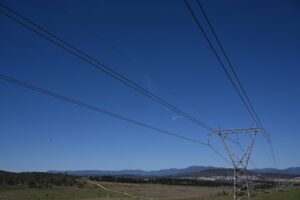US-based Enphase Energy says it has doubled its production targets for its new battery storage system in Australia after an overwhelming response from consumers.
Enphase – which is using Australia as the global launch for its modular batteries storage system had planned to ship between 12,000 and 15,000 units in the next six months and the following six months. But it has now lifted that to a total of 60,000 units for the 2016/17 financial year. That equates to around 70MWh.
“I didn’t expect (demand) it to be as aggressive as it was,” Enphase Energy’s Asia Pacific head Nathan Dunn said in an interview with RenewEconomy on Tuesday. “I thought the numbers we had targeted would be an aggressive target, but demand is well above expectations.”
Dunn puts this down partially to large interest from the retro-fit market – households that are about to lose their premium feed in tariffs at the end of this year – this is particularly the case in NSW, and in Victoria. He reports demand from NSW, Victoria and Queensland.
He also said consumers were also looking for more energy independence, and were attracted to Enphase Energy’s modular system – which comes in units of 1.2kWh (and a cost of between $2,000 and $2,500 depending on installer).
Dunn notes that there has been little talk of subsidies for battery storage – although ACT and South Australia have unveiled incentive schemes to kick-start the market. He believes the impetus will come from the drop off in feed in tariffs.
“That is driving and piquing consumer interest – but consumers also continue to see energy prices increase, particularly in peak periods, and that is driving demand. They looking to garner that energy autonomy.”
The Enphase units are likely to be purchased in single units, or in twos and threes as people test the storage market and maximise their “bang for their buck.”
It may be particularly attractive to those with smaller rooftop systems, 1.5kw to 2kW which were popular at the height of the uptake of premium feed in tariffs, or those wanting to keep a lid on storage investments.
Australia is seen as the first big mass-market for battery storage in the world, thanks to its high penetration of rooftop solar PV, good sun, and high electricity prices. Enphase is one of a number of international and local companies launching their global products into this market.
Predictions vary widely for what the uptake of battery storage might be, and for what purpose – storing the output of solar systems for use later in the day, as back-up in blackouts, or to go off-grid. But Bloomberg New Energy Finance predicts that Australia will install 33GW of battery storage capacity by 2040.
Dunn would not be drawn on those predictions, or on what the market share of Enphase might be – although it expects that its market share would be higher than the 9 per cent it holds in the inverter market.
Dunn says that 78 per cent of the company’s customers in Australia (it has nearly 150,000) indicated interest in battery storage. He said it was clear that the global market would be in the “multi-billion” dollars by 2020, and Australia would account for a significant portion of that.
 “It will be a large market, I hope it will be a huge market. Globally it will be multi billion market, but it is early days,” Dunn said. “If Enphase numbers are anything to go by, Australian and New Zealand will be a significant portion of that market.
“It will be a large market, I hope it will be a huge market. Globally it will be multi billion market, but it is early days,” Dunn said. “If Enphase numbers are anything to go by, Australian and New Zealand will be a significant portion of that market.
On prices, Dunn was also coy, other than to note that forecasts suggest a cost fall of between 40 and 60 per cent by that time. He said Enphase, which currently sources lithium ion phosphate cells from Eliiy in Japan was “chemistry agnostic” and would consider other chemistries if they proved cheaper and as reliable.
“There will be opportunities in economies of scale to bring the cost of chemistry down, that will happen rapidly over next 24 to 48 months, given the growing demand for storage solutions globally.”
Enphase pitches its battery storage on being part of an “energy solution”, so the key is not so much in the hardware, but in the software, which can manage the battery’s performance, set algorithms to deal with various tariffs, and fit in with household consumption patterns
“Our strategy will remain to talk about enphase solution as complete package. Folks are bringing products to market place, but they do not offer a solution. So you have got to find out what inverters are going to work with it, and how to communicate. Our unique proposition is that we have a single bundle.”
Dunn noted not only is there growing interest in battery storage from consumers, there was also a more open approach from the utility sector.
“You probably saw a bit of this at ENA2016 (network conference), there is certainly an open dialogue that is happening now between energy networks and those that have solutions for the industry to work together.
“In the past you may have seen a bit of an adversarial approach, but that slowly wearing away. These type of solutions are going to be there, so people are looking to get a proper solution rather than seeing it as something that should be blocked or slowed down.”









